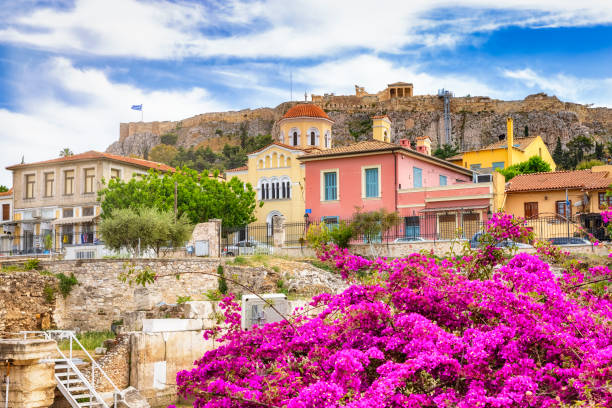Nestled at the foot of the Acropolis, Plaka is one of the oldest and most charming neighborhoods in Athens. Its narrow cobblestone alleys, neoclassical houses, flower-filled balconies, and quaint tavernas give visitors a true taste of old Athens. But have you ever wondered where the name Plaka comes from?
🏛️ The Origin of the Name “Plaka”
The origin of the word Plaka is somewhat mysterious, but the most widely accepted explanation traces it back to a large marble or stone slab (“πλάκα” in Greek) that was discovered in the area during the Ottoman period. Some historians believe the name refers to a flat stone or even a flat area, since “plaka” in Greek can mean “slab” or “plate.”
This slab may have marked a boundary or had some ancient significance, though no one knows for sure. Over time, the name stuck — and the area has been called Plaka ever since.
🏘️ A Living Museum Beneath the Acropolis
Today, Plaka is often referred to as the “Neighborhood of the Gods” because of its proximity to ancient temples and archaeological sites. Walking through its streets feels like stepping back in time, where Byzantine churches, Ottoman architecture, and neoclassical mansions coexist in harmony.
Whether you’re enjoying a glass of wine in a shaded courtyard, exploring local artisan shops, or listening to live bouzouki music drifting through the streets, Plaka offers an unforgettable blend of history, culture, and Greek hospitality.

